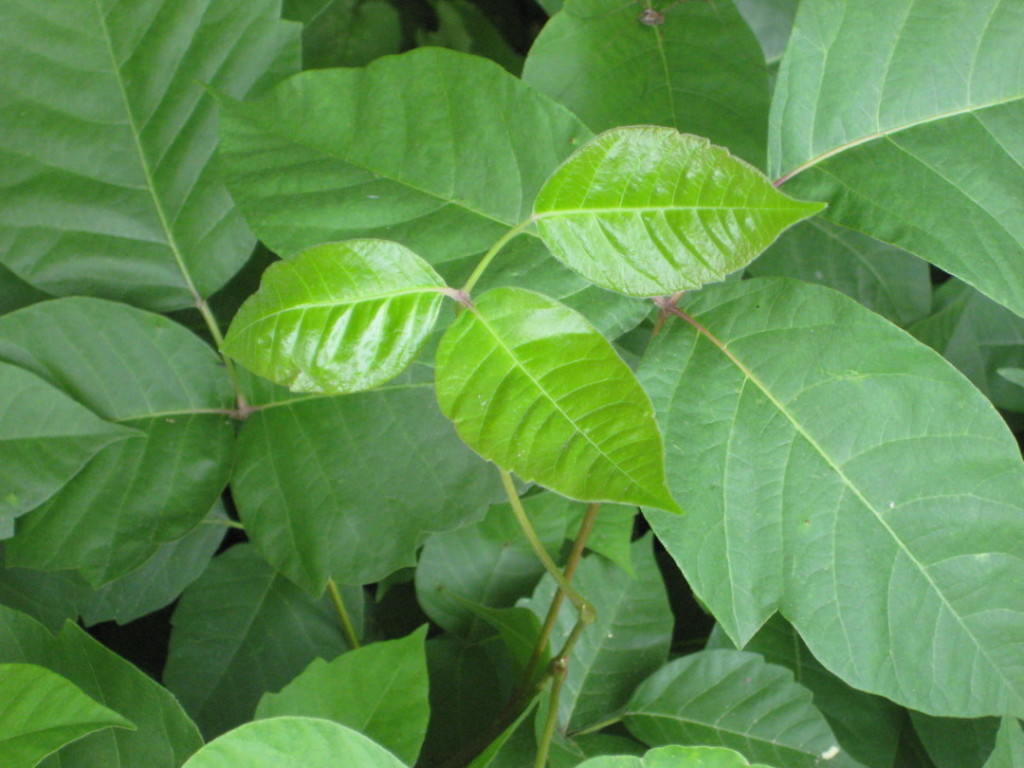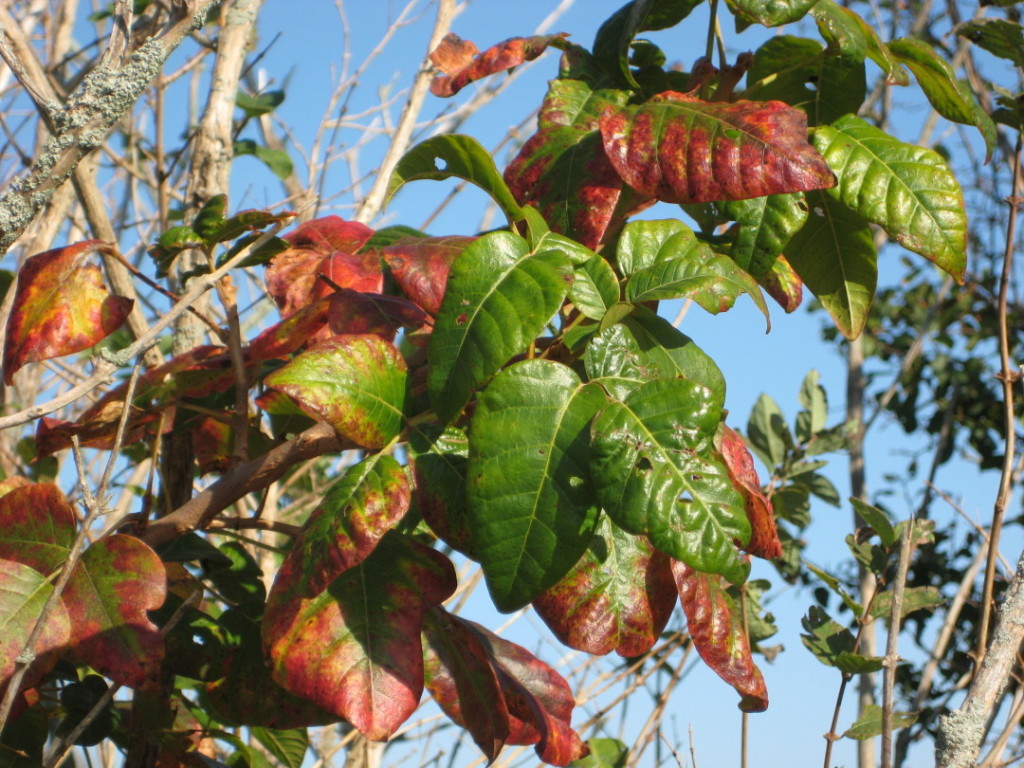In order to combat something—in order to thwart an enemy, and even possibly turn it into an ally—we need to know how it works. Just how does this little green leaf work its devastation on the human race?
Many people swear that they’ve gotten poison ivy simply by walking past it. Not so. This is a long-cherished belief, and researchers in the nineteenth century spent years trying to isolate the deadly “effluvia” that floated through the air. But no part of poison ivy is windborne—not even the pollen, which is physically picked up and carried from place to place by pollinators. You can’t get a rash just by being in the vicinity of poison ivy. In order to develop the dermatitis reaction from poison ivy, you have to come in direct contact with the bad stuff: urushiol.
What Is Urushiol?
Urushiol is a complex combination of chemicals, which is actually found in dozens of species of plants. It’s abundantly secreted by the plant in tubes called resin canals which are located in the phloem, the layer of living tissue just under the bark. Poison ivy’s sap caries urushiol throughout the plant, from leaf-tip to root-tip. Urushiol is found in the fruit and flowers, but not in the actual wood cells (xylem) of the vine.
Resins tend to be sticky substances. If you’ve ever parked your car under a pine tree and tried in vain to scrub the pine resin off the hood, you’ll know what I mean. Urushiol is just as tough to remove from your skin, as it’s an oleoresin, both oily and sticky.
Inside the plant, urushiol is a whitish color, but as soon as the chemical hits the air, it combines with oxygen, and darkens. Another name for poison ivy is markweed, because the sap made an excellent ink. It was often used for labeling linen, as the dark letters wouldn’t wash off, even in the boiling water of old-time laundry vats. (A handy tip for when you’re heading off to summer camp—label your underwear with the sap of poison ivy.) I would suspect that this system of laundry-marking caused an enormous number of undiagnosed rashes in unlikely places.
For most of human history, urushiol was a puzzle. No one knew exactly what there was about those weird Toxicodendron plants that caused dermatitis. It was a Japanese chemist, Dr. Rikou Majima, who finally identified the culprit. In the early twentieth century he spent years studying the sap of the lacquer tree, and established the exact chemical structure of the toxin, which he named urushiol from “urushi,” the Japanese word for lacquer.
This courageous researcher (I hope he was immune) discovered that urushiol is not a single substance but rather a mixture of chemical compounds known as alkyl catechols. Catechols are substances which can have powerful effects on the human body—others include adrenaline and dopamine.
Urushiol molecules penetrate the epidermis (the thin outer layer of skin) and then combine with proteins found in the dermis, or inner layer. The urushiol/protein combination is an antigen, or a substance that provokes an immune system response. White blood cells recognize these urushiol-infested proteins as invaders and ring the alarm bell, so to speak, activating the body’s immune defenses. 
The thing with poison ivy is—it isn’t the first time that gets you. The first time you encounter urushiol, your immune system responds instantly—but not overtly. You’re unaware of the complex internal processes going on inside your body as your immune system identifies the chemical. Lymphocytes (white blood cells), once sensitized, are programmed to respond to future urushiol attacks, and these “memory cells” can persist in the body for many, many years.
As always with poison ivy, everyone’s reaction is a little different. Some people can encounter poison ivy multiple times before finally the immune system decides, okay, time to get serious, and your body develops the dermatitis reaction. Some people get a horrendous rash on the second exposure. Others don’t react at all–there are a few members of the human population who do seem to be completely immune.
As I’ve often said before, poison ivy is not a bad plant, out to torture humans just for the fun of it. Almost all other species of animals aren’t allergic to urushiol, and poison ivy berries are an excellent winter food for birds.
Itching to know more? Check out my books:
In Praise of Poison Ivy: The Secret Virtues, Astonishing History, and Dangerous Lore of the World’s Most Hated Plant. Identification, tips for healing the itch, and why birds love PI–everything (and more) that you ever wanted to know about poison ivy.
Leaflets Three, Let It Be! A picture book for pre-K to Grade 3, to help the youngest explorers enjoy nature safely.





A clearly wonderful examination of poison ivy by a naturalist with a keen eye and a sharp pen
Thanks Anita for your insights and humor on this pertainent subject